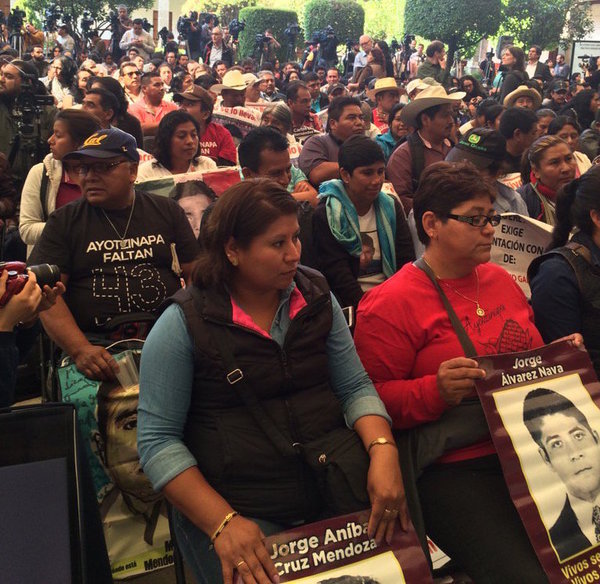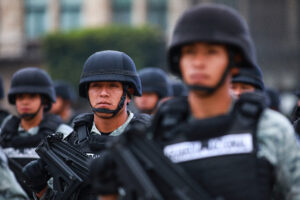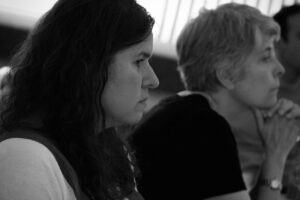I was in the front row of history in Mexico City last Sunday.
Actually, the second row.
The front row was set aside for Mexican government officials who never showed up. The room was filled with 500 people, including a large section reserved and filled by the families of the missing.
The event was the official presentation of the final report of the International Group of Independent Experts (the Experts) that has been providing technical assistance to the Mexican government on the disappearance of 43 students in Guerrero, Mexico in September of 2014.
The Experts presented their findings in great detail. What they were able to confirm, the holes in the case, information that they had solicited but the government refused to provide, people they wanted to interview but were not allowed access too, and how their work had been impeded by the very government that invited them in to conduct the investigation.
The room filled with emotion as the families began calling to the Experts, “no se vayan”—don’t go. Tears flowed. A sense of failure hung over the room.

The Experts, for all of their skill and persistence, were unable to uncover the truth. The families, the Experts, the local human rights groups, those of us outside of Mexico who had attempted to support the investigation, we all had failed to find the truth, to find closure.
It was disheartening.
But it was a moment, not the end of the story. That will only come when we know what happened to the students and who made up the version of events that the government calls the “historic truth.”
More than a year ago, on January 27, 2015, then-Mexican Attorney General Jesús Murillo Karam announced the conclusion reached by the government’s investigation. In summary, the students had commandeered buses to attend a protest. Local police agents, who had been called in by the local mayor, intercepted the buses. The police turned the students over to a local criminal organization called Guerreros Unidos. They killed the students and the bodies were burned in a local trash dump. This is basically what Murillo Karam called the “historic truth.”
There are 123 people in jail for this crime, many of them allegedly tortured.
To date, the remains of only one student have been identified. The status of the others is missing—disappeared.
The Experts were brought from outside of Mexico, renowned investigators and prosecutors appointed by the Inter-American Commission on Human Rights, because the families of the missing refused to accept the official story. They wanted outside confirmation.
Unfortunately, they didn’t get it.
What the Experts did unearth are fundamental problems with the case that do not stand up under a professional investigation and scientific analysis. The Experts determined that the bodies could not have been burned at the trash dump. The evidence at the scene simply does not support that version of events. The government’s version of events relies mostly on confessions allegedly obtained through torture. And authorities have either dismissed or ignored relevant lines of investigation related to the students’ possible unintended interference in drug trafficking.
The presentation of the Experts’ final report on Ayotzinapa leaves those following the case with the glaring question, who invented the government’s version of events—the “historic truth”—and why? It also leaves the families asking yet again, “what happened to my child?”
The presentation of the Experts’ report was a moment in history, a sad one that I had the sad privilege to witness. I take this experience with me. And, like so many others, I will not let this go until the truth is known about what happened to the students from Ayotzinapa, Guerrero, and who covered it up.
For More WOLA analysis on the case of the 43 disappeared students, see:
- Case of the 43 Disappeared Students: Key Points from the Group of Experts’ Final Report
- Mexico’s Government Obstructed the Investigation of the 43 Disappeared Students
- Four Ways the Mexican Government Obstructed Justice and Impeded the Investigation into the 43 Disappeared Students
- Mexico’s Government Claims the 43 Disappeared Ayotzinapa Students Were Incinerated in a Trash Dump. Here’s Why They’re Wrong.


